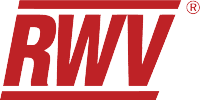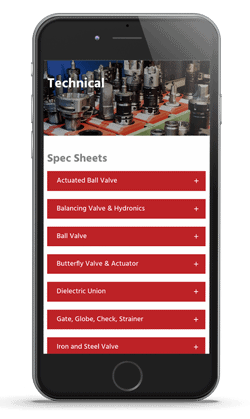What is a Gas Ball Valve?
Comments Off on What is a Gas Ball Valve?Valves come in a wide array of types to control the flow of liquids and gases within a system. Industries rely on numerous valves in applications ranging from chemical process systems to plumbing, with some of the most common valve types including:
- Ball valves
- Butterfly valves
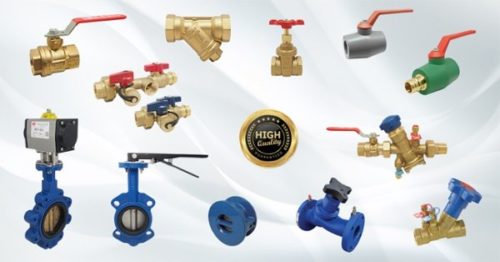 Check valves
Check valves- Diaphragm valves
- Gate valves
- Globe valves
- Knife gate valves
- Parallel slide valves
- Pinch valves
- Piston valves
- Plug valves
- Sluice valves
In their most general process and piping system applications, the above valves may perform numerous functions, such as starting or stopping material flows, regulating system flow and pressure, throttling flow, controlling flow direction, and relieving excess pressure to keep systems operating within safe levels.
Ball valves are ideal for controlling the flow of liquid or gas through a system. The rotary ball within the valve stops the flow of material when the valve reaches a specific state. Ball valves perform well in low-flow situations, throttling vapors and gases in hydrocarbon processing applications. Various applications rely on the low torque and tight seal of ball valves to start and stop the flow of gases and liquids.
This blog will discuss the advantages, disadvantages, and most common uses and applications for gas ball valves.
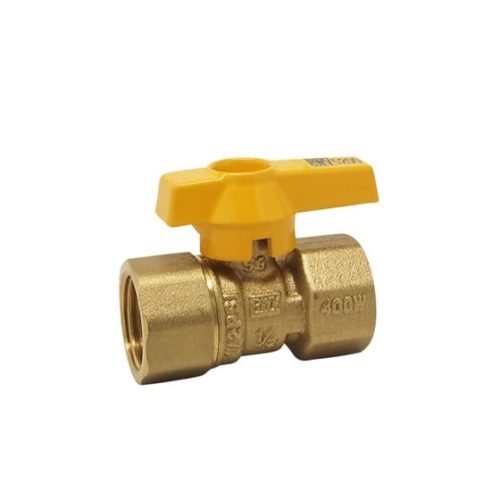 What Makes Gas Ball Valves Different?
What Makes Gas Ball Valves Different?
Gas ball valves deliver better performance than other valve types in many applications. Gas ball valves offer a lightweight and compact alternative to heavy brass gas valves. These ball valves come in a range of configurations to suit various specifications and can deliver ideal performance in hydrocarbon systems, as well as vapor, air, and gas systems.
Most gas ball valves are quarter-turn for easy operation and seal tightly due to the rotating ball mechanism. The valve can start and stop the flow of various liquids and offers a bubble-tight seal when closed. Ball valves often provide an ideal solution for connecting other instruments using tubing.
Many high-temperature and high-pressure applications rely on metal-seated ball valves to deliver dependable performance. Gas ball valves close and open quickly, providing impressive control of high-pressure flows.
The Advantages and Disadvantages of Gas Ball Valves
Ball valves offer a range of benefits for industrial gas system applications, with few drawbacks. The advantages of choosing a ball valve include:
- Versatility – Performs in a broad range of industrial applications
- Efficiency – Works at low torque with a bubble-tight seal
- Ease-of-use – The lightweight and compact design removes frustration from use and installation
- Affordability – Lower cost than valves of a similar rating
- Simple maintenance – Reliable operation and easy to repair
- Strength – Dependable performance in high-temperature, high-pressure, and high-volume applications
- Durability – Robust operation with a long service life
Gas ball valves can be at a disadvantage in high-velocity flow and throttling applications. These applications can speed up valve erosion and cause early failure. Using the improper ball valve for the specific fluid may also contribute to faster wear. There are a wide range of ball valves available to suit a variety of unique applications.
Gas Ball Valve Uses/Applications
Gas ball valves offer reliable performance in combustible gas applications and effectively regulate air, gas, and vapor flows. Residential and commercial properties rely on gas ball valves to deliver liquefied petroleum gas (LPG), natural gas, manufactured gas, and gas/air mixtures to gas equipment and appliances. Gas appliances such as boilers, water heaters, furnaces, fireplaces, and gas stoves also commonly rely on a ball valve.
Gas Ball Valves From RED-WHITE VALVE CORP.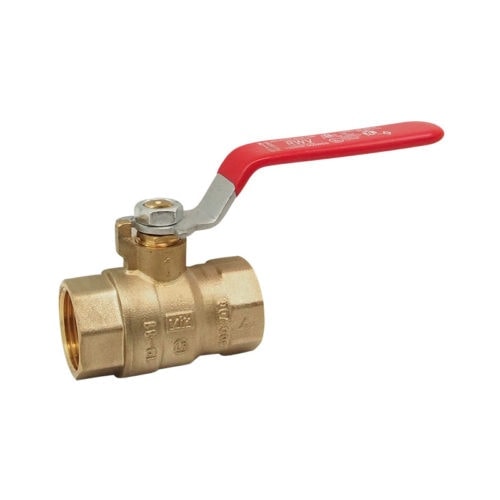
Offering airtight seals and enough durability to provide years of reliable flow control, gas ball valves provide an ideal solution for an expansive range of applications. Ball valves are simple to install and affordable, with a broad selection of material and design options. RED-WHITE VALVE CORP. gas ball valves are made to high standards and 100% air-tested to ensure optimal performance when regulating material flows.
RED-WHITE VALVE CORP. has been serving the international market with industrial valves since 1971. We ensure the highest quality by manufacturing all of our valves in-house and We maintain multiple warehouses throughout North America giving us unsurpassed fill rates to our family of wholesalers. Browse our line of ball valves to find the best valve for your application, or contact us today with any questions or concerns.
Swing Check Valve vs. Spring Check Valve
Comments Off on Swing Check Valve vs. Spring Check ValveValves are versatile devices used for controlling the flow of liquids or gases. They play an important role in countless piping and process systems, typically serving to regulate flow and pressure, start or stop flow, or prevent the occurrence of back flow within a system. Swing check and spring check valves are two relatively common valve types that have broad applications.
Swing check valves prevent reverse flow in systems with horizontal forward flow utilizing a swinging flap. Spring check valves also prevent reverse flow, in this case utilizing a spring-loaded plunger. Understanding the differences between these two valves is beneficial in determining the optimal valve for a particular system or application.
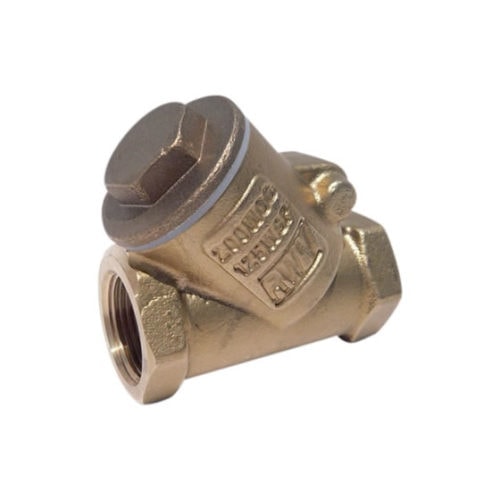
Swing Check Valves
In swing check valves, a flapper will swing away to allow forward flow of a fluid or gas. When it is time to stop the flow, the flapper will swing back onto the seat, closing the valve automatically as the system pressure decreases. Swing check valves are notable due to their large flow capacity. Since these devices require a swinging motion to function, their use is limited to horizontal flows or vertical upward flows.
Pros and Cons of Swing Check Valves
The most significant advantage of swing check valves is their low cost, which allows them to work within a wider range of project budgets. They also provide large flow capacity. Since this valve cannot support downward vertical flow, there are limits to the types of systems it can serve. Also of note, swing check valves are also more likely to amplify water hammer.
Applications of Swing Check Valves
Swing check valves function well with a variety of media, including liquids and gases. Some frequent use cases for swing check valves include firefighting equipment, flood prevention in sewage systems, and toilet flush mechanisms.
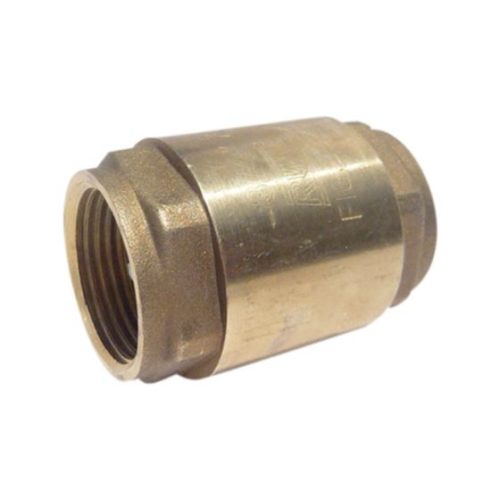 Spring Check Valves
Spring Check Valves
Spring check valves typically have hollow bodies and a large stopper, which receives constant pressure from a spring. When gas or fluid flows forward at sufficiently high pressure, the force will overcome the pressure from the spring and cause the stopper to open, allowing the desired flow.
Unlike swing check valves, spring check valves offer fairly low noise levels. They also minimize the sound and damaging effects of water hammer. This type of valve functions well in vertical applications, as it utilizes a spring to close the valve rather than relying on gravity and pressure.
Pros and Cons of Spring Check Valves
Since spring check valves are functional in vertical applications, they offer significantly more versatility than swing check valves, and are much more likely to fit with preexisting piping configurations. Depending on the spring selection, this type of valve will work well in virtually any flow orientation.
Spring check valves also offer the advantage of reducing water hammer. Known as a “silent check valve,” this type of device keeps noise levels down in applications where swing check valves could potentially exacerbate the issue. Other advantages of spring check valves include:
- Heat and cold resistance
- Rapid flow interruption
- Positive sealing even at a pressures below the cracking pressure
When compared to swing check valves, however, spring check valves are typically more expensive. They also have a lower flow capacity.
Applications of Spring Check Valves
Spring check valves are ideal for numerous purposes in water pipelines and systems. This type of valve serves to protect equipment from the damage that can be caused by back flow, thus reducing the risk of system downtime and potential contamination. Additionally, spring check valves can relieve pressure from the system to create a safer environment and ensure proper system function.
Valve Solutions from RED-WHITE VALVE CORP.
RED-WHITE VALVE CORP. has been providing our customers with industry-leading valve solutions for over 50 years. Our global market includes customers in industries such as HVAC, commercial, and plumbing. We perform all our own manufacturing at our own state-of-the-art facilities, giving us superior control over the quality of our products. We also perform 100% air testing during quality control to verify the efficacy of every valve.
To learn more about our valve solutions and how they will benefit your operation, please contact us today.
